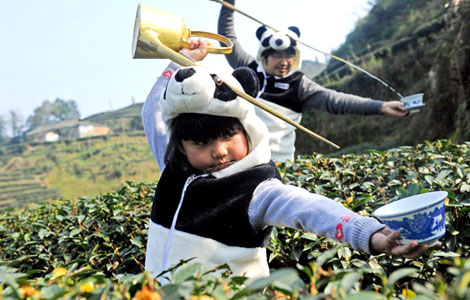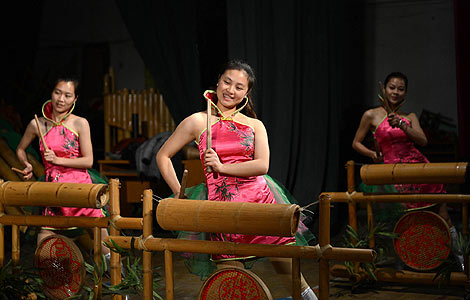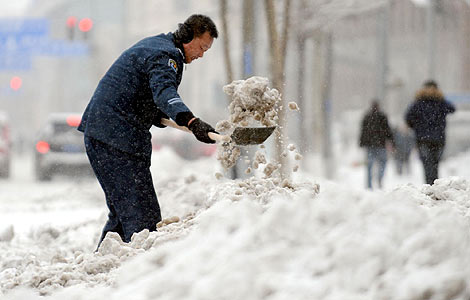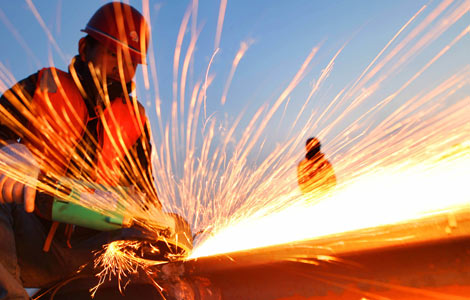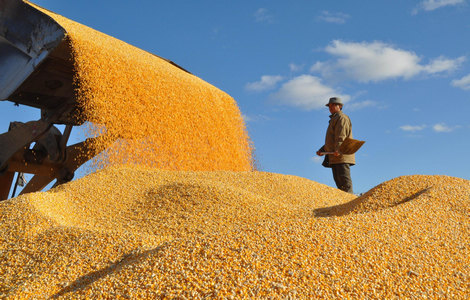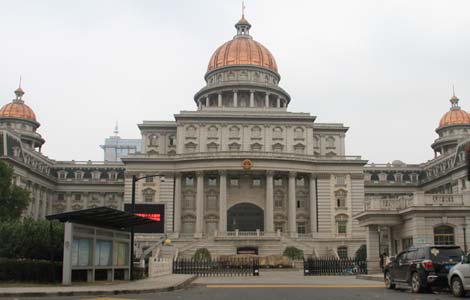
BEIJING - China is restructuring its dairy sector amid incessant tainted-milk scandals, but significantly more milk production likely puts colossal strains on the country's resources.
To meet a growing appetite for quality dairy products, the country's fast growing but fragmented sector faces many challenges, such as a shortage of high-caliber dairy workers, dairy companies and insiders said.
Although China is the third largest milk producer in the world, two-thirds of its dairy products come from aboard. The country aims to expand its raw milk production to 50 billion liters by 2015 from 36.56 billion liters in 2011.
With the country's per capita milk consumption a fourth of the global average, dairy demand is expected to grow as residential incomes rise.
But dairy production efficiency in China is much lower than that of many other countries, it may take 20 to 30 years for the industry to reach maturity, Nan Qingxian, executive director of the China Dairy Industry Association, said.
High demand, big investment
Despite quality issues, the big producers are gambling that better-off Chinese will increasingly recognize benefits of dairy nutrition.
"Dairy demand in China is expected to double in the next eight years, meaning the country will be consuming more than 70 billion liters of milk by 2020," Kate Hao, a Fonterra communications manager, said.
Both overseas and domestic dairy firms are increasing their presence in the country.
China's dairy giant Mengniu Dairy Company announced recently it would spend 3.5 billion yuan ($556 million) to expand its farming operations, after inking a deal with Arla Foods that gave the Danish-Swedish dairy group a 5.9-percent stake in the enterprise.
The move, aimed at ensuring all milk of the Inner Mongolia-based company is self-supplied by 2015, came after its products were found tainted with carcinogen aflatoxin late last year.
Fonterra announced in April that it would invest 557 million yuan in two more feedlots in China, which will take its number of farms to five with around 15,000 cows.
In Guangdong, where dairy output can only meet one-third of local demand, enterprises are setting up farms in surrounding regions to capitalize on the southern province's hunger from dairy products.
Resources strained, cows shipped in
While there is considerable optimism that the surging dairy demand can be met through robust breeding strategies, resource constraints remain a major concern.
Dairy companies generally recognize less-trained workforce is the biggest challenge, while feed, genetics as well as pharmaceutical and transportation support are also issues.
"Most people don't understand that dairy farming requires highest scientific approach to the operation," Chief Executive Officer Charles Shao of Huaxia Dairy Farm said.
"If you compare with the American farmers, the average Chinese dairy farmers are at least 50 year behind," he said.
Although China has a dairy belt that covers most of its northern regions, it is far less productive per hectare compared with dairy areas in western countries, due to poor quality cattle and feed.
An awareness of the problem has fueled demand for high yielding cows from abroad. In 2011, heifer imports jumped to 99,361, up from 2,800 in 2001, data of China Dairy Industry Association showed.
Heifers from Australia, New Zealand and Uruguay generally produce more milk than domestic cows under a feedlot environment, said Justin Slaughter, general manager of Australian Rural Exports Pty Ltd. The Brisbane-based livestock exporter aims to ship 30,000 heifers to China this year.
Due to strong demand from China and other countries, the average price for imported heifers soared to nearly $3,100 per head in November 2011, the year's highest, a jump of $600 from the highest level in the previous year, data of China Dairy Industry Association showed.
However, the problem remains that China's growing dairy herd continues to put pressure on feed resources. Nadamude, secretary general of the Dairy Association of Inner Mongolia, said China currently has 13 million dairy cows, and finding high-grade feed for the animals has been problematic.
China's dairy herd, which is expected to increase to 18 million head by 2020, will need 1.1 million tons of alfalfa feed, which is widely used to increase protein content in milk, said Li Shengli, a dairy expert from China Agricultural University.
The country produced only 300,000 tons of alfalfa in 2011, while it imported 276,000 tons, customs data showed.
Dairy producers, however, said there is still hope that China can increase dairy output by upping yields per cow without enlarging the herd.
Fonterra, which is responsible for 30 percent of the world's dairy exports, is upbeat. "While China does indeed face substantial challenges in access to water, feed and land, there is still enormous scope for increased production," Hao said.
China's milk yield per cow stands at about 5,000 liters annually, much lower than the world's average of 7,000 to 8,000 liters, the China Dairy Industry Association showed.
"Improved genetics, feeding, disease control and cow care can make a great contribution to increasing production, in addition to boosting the number of cows," Hao said.
The US used to have over 16 millions cows 30 years ago, but it has been able to increase production while reducing the herd size to 9 million dairy cows, Huaxia CEO Shao said.
"If our future evolves parallel to what happened in the US, we should have enough resources to have more milk production," he said. Quality will be eventually improved but it will take time "because we are moving a very large ship in the water".
Backyard Farmers struggle
To increase quality and output, China has been building feedlots installed with modern facilities. Moves to scale up the industry came after melamine-tainted milk was found in 2008 to have killed at least six infants. The scandal drastically eroded consumer trust.
Around that time 60 percent of cows were owned by backyard farmers. The government has since made it mandatory for all processors to self-supply 70 percent of their raw milk, while it has increased fiscal incentives for building of large standardized farms.
The effort, which cut demand for backyard farmers' milk, has spurred expansion of dairy cooperatives, but a lack of sufficient capital has hindered such farmers from increasing their production.
Bai Yin, an official from the agriculture and animal husbandry bureau in Inner Mongolia autonomous region, said the central government offered 1.5 million yuan in subsidies for construction of each 1,000-cattle farm, but such a farm would cost at least 20 million yuan to build.
In Inner Mongolia, the country's top milk producing region, about 3 billion yuan is needed to convert all the household farms with less than 50 cows into standardized farms, but the government has only allocated 70 million yuan in support, Bai said.
Shao described the sector as a "capital intensive industry" and investors needed to take a long-term view. "You have to spend money first and wait several years to see the fruit of the work."
Aside from the issue of money, there's a lack modern management in the dairy cooperatives, which backyard farmers join by offering their cows instead of cash for shares, and earn money according to the shares they hold.
This model allows farmers to keep their cows in large facilities built by companies, which offer better feed, milking and veterinary care than they themselves could individually provide.
But the small-scale dairy farmers continue to protest that the large dairy firms grab most of their profits.
A business analyst Song Liang said although dairy cooperatives proved to be successful in many parts of the country, the model had been criticized as it failed to really benefit small farmers.

